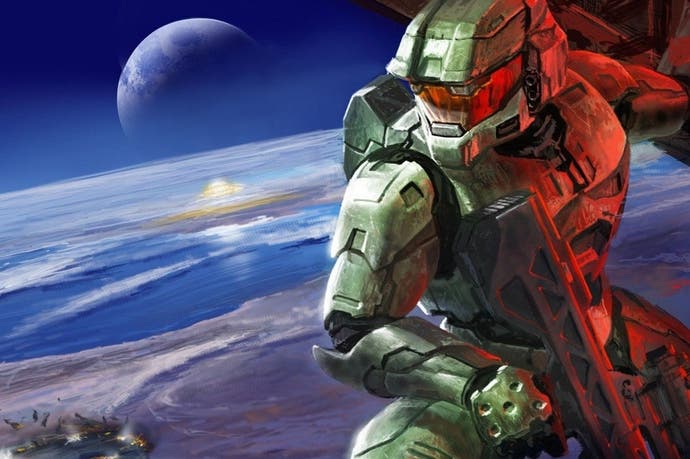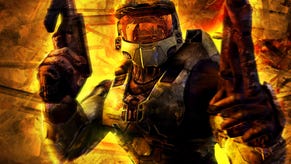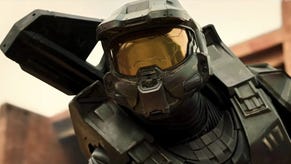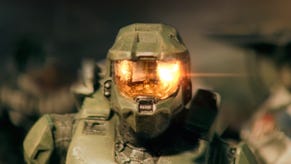Why online shooting peaked with Bungie's decade-old Halo 2
Halo, goodbye.
Let me tell you the story of the number 33, an American teenager called Marine14, and how I never became a doctor of film.
It's a story in which I claim that Halo 2 is a masterpiece, which is especially exciting because I can't remember much of what happened in the single-player side of the game aside from me getting quite cross and wishing Bungie had read more Robert McKee. Actually, I only wish that was true - I do remember more.
I remember a plant made of flesh who rearranged the story's major players in an unprecedented act of deus ex flora, I remember playing as not-Master Chief for longer than the zero seconds I would have found this acceptable, and I remember that the campaign wasn't so much forgettable as actually unfinished, less of a cliffhanger than a narrative power cut.
More importantly, I remember that none of it mattered. And in not mattering, Halo 2 blazed a dubious trail for a whole genre of iterative billion-dollar shooters with half-formed, interchangeable storylines delivered as a blaring Hollywood howl.
All of which is to say that Halo 2's multiplayer was both authentically revolutionary and the best online console shooter there has been.

Halo 2 emerged almost a full decade ago into a gaming world, it's worth remembering, very different from our own. I knew Halo 2's multiplayer was likely to be good because its LAN-only predecessor in Halo: Combat Evolved had inspired me and a group of my friends to learn the basics of network cabling and regularly rearrange our houses into wired battlegrounds. The promise of doing this online was huge - Halo 2 wasn't just the reason I bought my first Xbox Live subscription. It was the reason I got broadband. It dragged me and a generation of gamers through the rabbit hole and into the bittersweet connected wonderland beyond.
For the purposes of the entirely arbitrary rhetorical formulation I'm about to deploy, three distinct things combined to make Halo 2's multiplayer so exceptional. The first is a mainstay of the series from Combat Evolved onwards - its just-so sense of movement and aiming. Articulating the elusive satisfaction that comes with physically existing in the world of Halo has proved difficult over the years, so naturally I've come to rely on the lyrics of an artfully shoddy band from the 90s you've probably never heard of called Animals That Swim. In a song called London Bridge, they sing about treasuring a lump of rubble snatched from a remodelled laundrette, and the pleasure of holding it to feel its "splendid weight". I appreciate we're a long way from holy wars among the stars and the audacious grace of lush green ringworlds here, but this comes closer than anything else I've found to capturing the deep joy taken in something that's so perfectly the right measure and dimension. That's how moving in Halo feels.
Secondly, Halo 2 was balanced and level in a way which encouraged skill and strategy. Starting weapons were standardised, with more powerful alternatives to be fought over on the map. Deathmatch became a matter of territory and tactics. The game offered no geography-defeating power-ups of flight or speed, making knowledge of and fleet-footed navigation around the maps crucial. And there was skill-based matchmaking to ensure a mostly steady curve of challenging opponent - actually skill-based, because your rank would fall if you lost matches. In sharp contrast to the accumulative 'Well Done' of ranking in today's shooters, Halo 2 wasn't afraid to tell you you'd gotten worse. Its multiplayer was an elegant bare box. Learning its depths took time, and its complexities were unlocked by patience and ability rather than the brute investment of pure hours and the XP they bring.
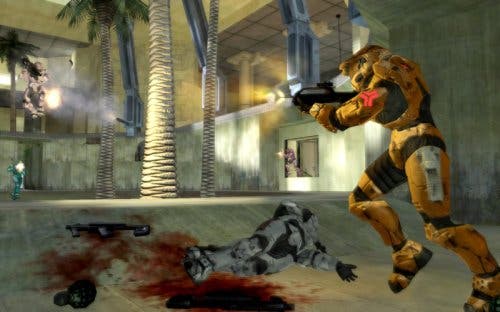
Of course, if you're going to play a game of territory and tactics, the space you play it in becomes pretty crucial. That's why the third key element of Halo 2's multiplayer was its selection of maps. My friends and I spent the vast majority of our time playing four-on-four Slayer on small-to-medium levels, and while not every Halo 2 map was a classic, the very best were designed with a tight asymmetrical balance that brilliantly complemented the game's elegant, level-playing-field approach. The interlocking platforms and shortcuts of Lockout, the opposing sniper towers and dipped bowl of Ascension, the tense narrow corridors and corner cover of Turf - these are small patches of geography that even now, browsing images to refresh my memory for this piece, unfold from my mind into tactical maps of killboxes, safe zones, entry points and defendable strongholds. These places are as real to me as the room in which I played them, or the street outside.
"Over the years the series' points of differentiation have been worn down to nothingness."
The result was a compelling game that called us online every night in what for most of us was a new pattern of play. Halo 2 introduced us to a new vocabulary, and a new kind of anguish. As the first of its kind - a truly mass-market online console shooter - the game was beset by foul play. We learned about bridging, standby buttons, the BXR glitch, swipe sniping, the noob combo, and many other cheats and exploits that ran the gamut from canny advantage-taking to outright crookery. A hard-edged ranking system gave competition meaning, but it also meant players were willing to destroy the basis of that competition in order to boost the number that defined them. Sometimes entire nights were spent waiting for a real game against an evenly matched team who weren't cheating. Sometimes that game never came.
Still we played, because that number defined us, too. I played so much, night after night, neglecting my postgraduate studies in favour of chasing that elusive winning streak that would take us past the mark of a quality Halo 2 player - a rank of 25 - and on to the numbers that struck fear into us as we sat in filling lobbies - 30 and beyond. To borrow a phrase from my colleague Jon Blyth, I'm not saying I'd have completed my PhD if is wasn't for Halo 2. I'm saying we'll never know.
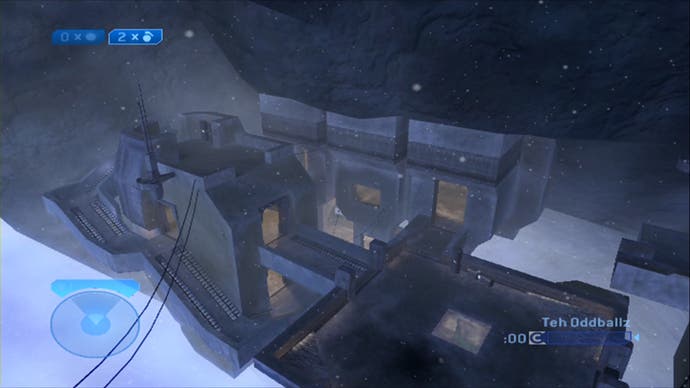
What I do know is that the pursuit of rank led me to form what seemed then to be some very strange and new relationships. We're all familiar now with the mix of ages and nationalities that mingle in the playlists of high-profile games, social configurations of everyone from middle-schoolers to the middle-aged. My friendship with an American teenager I only ever knew as Marine14 felt like a frontier arrangement, the kind of bond of circumstance for which rules aren't yet written. On my side it was tinged with guilt - I'd play sessions with Marine's Slayer crew because they were ruthless and, based in the States along with Halo's servers, they often had host advantage. Ignoring invites and messages from my regular team made me feel like a mercenary. Hitting my peak rank of 33 made me feel better.
I sometimes wonder how Marine14 - now presumably known as Marine24 - is doing these days. I never really think about that rank of 33, except to marvel at how important it seemed.
Telling players how good they really are at a game is now unfashionable, and gradually Halo has followed fashion. Over the years the series' points of differentiation have been worn down to nothingness, with Call of Duty-inspired loadouts, perks and killstreak drops throwing chaos into a system that thrived on even-handed stability, making it faster and stupider. Halo 4 is a barking arcade of head-pats and ADD reinforcement. We've lost something intangible that used to happen between four men starting with BRs and grenades on Lockout with a count to 25, the swinging sense of paralysis and power, of gridlock and frenzy, to which no game with a jetpack will ever come close.
